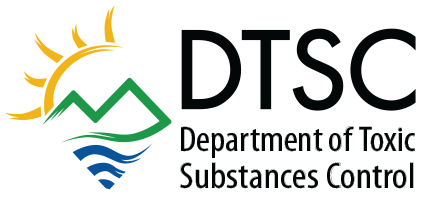Proposed Candidate Chemical: PPD Derivatives
DTSC proposes to add para-phenylenediamine (PPD) derivatives to the Candidate Chemicals List due to concerns about aquatic toxicity and skin sensitization. Briefly, this proposal includes para-phenylenediamine (also known as PPD, PPDA, benzene-1,4-diamine, 1,4-diaminobenzene, and 1,4-phenylenediamine) and its derivatives with a molecular weight less than 1,000 daltons.
The chemical class definition and rationale for this proposal are outlined in this summary document and detailed in the Technical Document for the Proposal to Add para-Phenylenediamine Derivatives to the Candidate Chemicals List.

PPD derivatives are small reactive molecules that are widely used in consumer products
PPD derivatives have recently raised significant global concern after mass die-offs of coho salmon were attributed to a transformation product of a widespread tire ingredient known as 6PPD (N-(1,3-dimethylbutyl)-N′-phenyl-p-phenylenediamine). Some of these other PPD derivatives are similarly used in tires and other rubber products. The more-studied members of this class of chemicals display aquatic toxicity and skin sensitization; other members of the class may pose similar hazards due to their structural similarity and high reactivity.
Adding PPD derivatives to the Candidate Chemicals List can help prevent regrettable substitutions
DTSC listed motor vehicle tires containing 6PPD as a Priority Product, effective October 1, 2023. Some PPD derivatives are potential alternatives to 6PPD in motor vehicle tires. The Safer Consumer Products (SCP) Regulations require Priority Product manufacturers who wish to replace the Chemical of Concern with another Candidate Chemical to perform a detailed Alternatives Analysis (see California Code of Regulations, Title 22, sections 69505 – 69505.9 for details). While Candidate Chemicals are not excluded from consideration as alternatives to a Chemical of Concern, and can prove to be safer alternatives in some cases, their potential tradeoffs need to be thoroughly evaluated prior to substitution.
Adding PPD derivatives to the Candidate Chemicals List does not create new regulatory obligations
Adding a chemical to the Candidate Chemicals List does not create any new regulatory obligations or regulated entities. The presence of a chemical on the Candidate Chemicals List allows DTSC to evaluate product-chemical combinations containing that chemical, potentially leading to Priority Product regulations. New regulatory requirements result only when DTSC identifies and lists a Priority Product under California Code of Regulations, Title 22, section 69503.5.
Public Engagement

On November 1st, 2023, we hosted a virtual public workshop via Zoom. The workshop included a background presentation on this proposal from DTSC staff and provided time for questions and public comment.
To view the comments submitted during the public comment period that was open from October 2nd to November 15th, 2023, please visit the CalSAFER website.
Below are resources related to this workshop:
FAQ About this Proposed Listing
For general FAQs about the Candidate Chemicals List, please see the Candidate Chemicals FAQ.
Why is DTSC taking a class approach to PPD derivatives rather than adding individual chemicals to the Candidate Chemicals List?
Taking a class-based approach can help ensure that structurally similar chemicals that have not been well studied but may have the same hazard traits as the better studied members of the class are also included and available to DTSC for further study and consideration. The Candidate Chemicals List already includes several chemical classes and groups – such as dioxins, ortho-phthalates, and perfluoroalkyl and polyfluoroalkyl substances (PFASs).
If DTSC adds PPD derivatives to the Candidate Chemicals List, what do I need to do if I manufacture or use chemicals that fall under this definition?
Nothing. The addition of PPD derivatives to the Candidate Chemicals List imposes no regulatory requirements or restrictions. Instead, adding them to the list allows DTSC to conduct further research on the uses and hazard traits associated with these chemicals in the context of specific consumer products, and potentially regulate specific product-chemical combinations following an extensive research and stakeholder engagement process.
While placing PPD derivatives on the Candidate Chemicals List imposes no regulatory requirements or restrictions, you may wish to collect data on their hazard traits if you manufacture or use these chemicals. You may also wish to replace them with safer alternatives. If you have information about the PPD derivatives you manufacture or use, we welcome hearing from you prior to or during the rulemaking process. We will use this feedback to inform our definition of the class of PPD derivatives and technical rationale.
How can I provide information or feedback to DTSC during this process?
Anyone can provide us information or feedback by:
- Attending the pre-regulatory workshop on November 1, 2023.
- Submitting comments during the comment period between now and November 15, 2023.
- Emailing us at SaferConsumerProducts@dtsc.ca.gov.
How can I ask DTSC questions about the proposal to add PPD derivatives to the Candidate Chemicals List?
You can email us at SaferConsumerProducts@dtsc.ca.gov.

